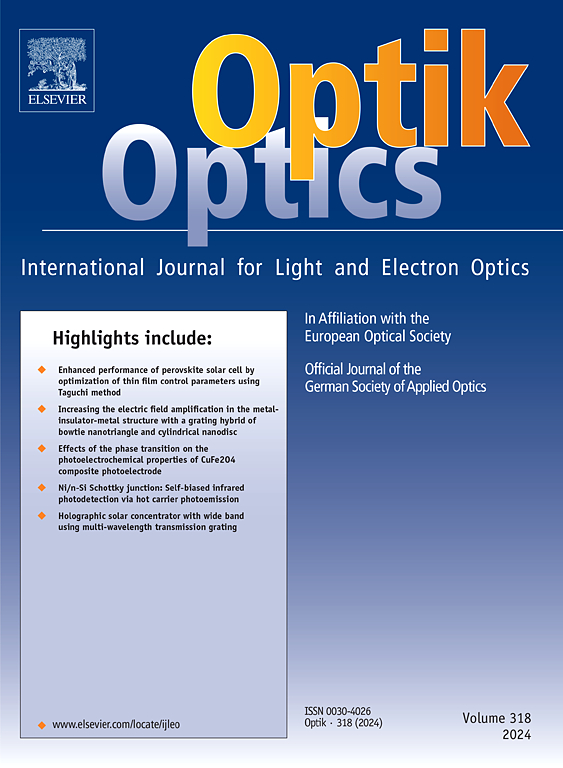One-step ultrasonic irradiation method for Bi-doped CsPbI2Br nanocrystals: An interplay of doping mechanisms
IF 3.1
3区 物理与天体物理
Q2 Engineering
引用次数: 0
Abstract
Doping metal ions into a perovskite lattice is an effective strategy for tailoring the intrinsic properties of perovskite nanocrystals (NCs). Herein, we report the synthesis of red emitting Bi3+ doped CsPbI2Br nanocrystals (NCs) using a one-step ultrasonic irradiation method. Thorough investigations of the effect of Bi3+ doping on the photophysical properties of CsPbI2Br NCs were presented which indicated that the Bi3+ ions can be incorporated at interstitial sites, at substitutional site or at both the sites by carefully optimising the feeding concentration of Bi3+ ions in the precursor solution. Structural studies showed that substitutional doping was observed for 3.4 % Bi3+ doped CsPbI2Br NCs which resulted in the lattice contraction and shortened the bond length of B–X bond, thereby suppressing the distortion of [BX6]4- octahedra of ABX3 perovskite structure, thus, improved the photophysical properties of CsPbI2Br NCs. For 3.4 % Bi3+ doped CsPbI2Br NCs, a reduction in the bandgap and 82 % increase in average PL decay time were observed as compared to that of the pure CsPbI2Br NCs. The prepared Bi-doped CsPbI2Br NCs with tuned bandgap and enhanced optical properties presented here could be used as potential candidate for future photovoltaic applications.
双掺杂CsPbI2Br纳米晶体的一步超声辐照:掺杂机制的相互作用
在钙钛矿晶格中掺杂金属离子是调整钙钛矿纳米晶体(NCs)固有性质的有效策略。在此,我们报道了用一步超声辐照法合成了红色发光Bi3+掺杂CsPbI2Br纳米晶体(NCs)。对Bi3+掺杂对CsPbI2Br NCs光物理性质的影响进行了深入的研究,结果表明,通过精心优化前驱体溶液中Bi3+离子的进料浓度,Bi3+离子可以掺入到间隙位、取代位或两者都有。结构研究表明,对3.4 % Bi3+掺杂的CsPbI2Br NCs进行了取代掺杂,导致晶格收缩,缩短了B-X键的键长,从而抑制了ABX3钙钛矿结构[BX6]4-八面体的畸变,从而改善了CsPbI2Br NCs的光物理性能。对于3.4 % Bi3+掺杂的CsPbI2Br NCs,与纯CsPbI2Br NCs相比,带隙减小,平均PL衰减时间增加82 %。所制备的具有调谐带隙和增强光学性能的双掺杂CsPbI2Br NCs可以作为未来光伏应用的潜在候选材料。
本文章由计算机程序翻译,如有差异,请以英文原文为准。
求助全文
约1分钟内获得全文
求助全文
来源期刊

Optik
物理-光学
CiteScore
6.90
自引率
12.90%
发文量
1471
审稿时长
46 days
期刊介绍:
Optik publishes articles on all subjects related to light and electron optics and offers a survey on the state of research and technical development within the following fields:
Optics:
-Optics design, geometrical and beam optics, wave optics-
Optical and micro-optical components, diffractive optics, devices and systems-
Photoelectric and optoelectronic devices-
Optical properties of materials, nonlinear optics, wave propagation and transmission in homogeneous and inhomogeneous materials-
Information optics, image formation and processing, holographic techniques, microscopes and spectrometer techniques, and image analysis-
Optical testing and measuring techniques-
Optical communication and computing-
Physiological optics-
As well as other related topics.
 求助内容:
求助内容: 应助结果提醒方式:
应助结果提醒方式:


